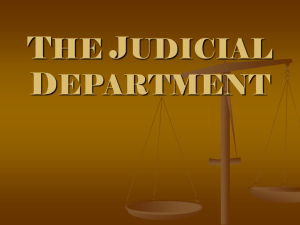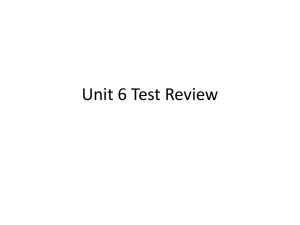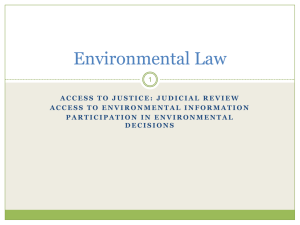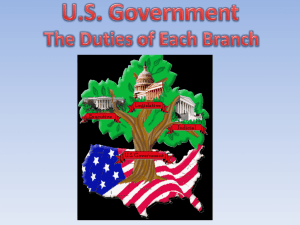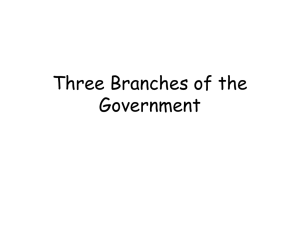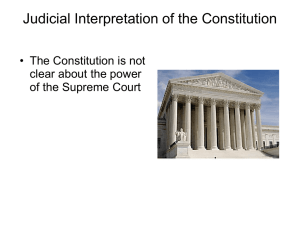JUDICIAL REVIEW IN EUROPEAN UNION COMPETITION LAW: A
advertisement
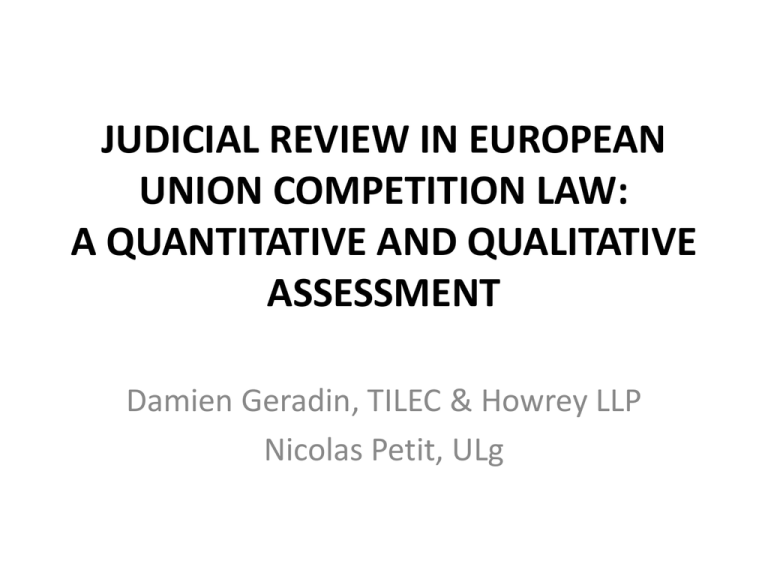
JUDICIAL REVIEW IN EUROPEAN UNION COMPETITION LAW: A QUANTITATIVE AND QUALITATIVE ASSESSMENT Damien Geradin, TILEC & Howrey LLP Nicolas Petit, ULg Purpose of the presentation • Why does judicial review matter in EU competition cases? • Provide some quantitative and qualitative information on judicial review in EU competition cases • Demistify the « success story » of judicial review under Article 102 TFEU Outline 1. The functions of judicial review 2. Importance of judicial review in EU competition law 3. Nature and standard of review applied by the EU courts in competition cases 4. Quantitative assessment 5. Qualitative assessment of the GC’s setting of normative standards function 1. The Functions of Judicial Review • The case for a functional approach • Typology of the functions of judicial review – The Lawyer’s Standpoint => Safeguarding Universal Values – The Economist’s Standpoint => Promoting Welfare • Eradicate decisional errors • Establish normative standards – The Political Scientist’s Standpoint => Ensuring Accountability 2. Importance of Judicial Review in EU Competition Law • Importance of judicial review in competition law – Competition law is prone to errors – Competition enforcement interferes with fundamental rights – Competition law may not be enforced in the public interest 2. Importance of judicial review in EU competition law • Several idyosincracies explain that judicial review really matters in EU competition law – Inadequate enforcement structure – Insufficient checks and balances – Influence of Commission decisions at national level 3. Nature and Scope of Judicial Review in EU Competition Law • Articles 263 and 261 TFEU • The institutional balance and the commission’s discretion (+ ossification risk?) • Full (law) v. Restrained (complex economic assessments) judicial review 3. Nature and Scope of Judicial Review in EU Competition Law • Permeable distinctions – Errors of law – Errors of fact – Review of « complex economic matters » • Judge Forwood on the « nature » of complex economic assessments • The Tetra Laval standard … • … and the Woodpulp good old days 4. Quantitative Assessment • Methodology • Testing the GC’s performance in relation to the protection of fundamental rights (see paper) • Testing the GC’s performance in eliminating decisional errors – Data is difficult to interpret under Article 101 and EUMR – Data is troubling under Article 102 TFEU => GC never annulled in full a Commission decision / all cases involve partial annulments on peripheral issues 4. Quantitative Assessment • Hypothesis 1 – Commission Always Right? – Implausible success story as errors are part of human nature – Benchmarking • In other areas where standard is possibly lower (EUMR), and negative decisions are less frequent, rate of annulment is higher • In other areas where standard is equal, rate of judgment higher – Applicants still lodge Article 102 TFEU proceedings (belief that decisions are flawed is strong) 4. Quantitative Assessment • Hypothesis 2 – Judicial immunity through formalistic normative standards • Quantitative assessment – Proxy 1: Degree of reliance of old, forms-based precedents => most cited cases are Hoffmann La Roche and Michelin II – Proxy 2: Presence of mainstream economic concepts in Article 102 TFEU Judgments • “Consumer welfare” is not even cited once 5. A Qualitative Analysis of the “Setting of Normative Standards” Function of the GC • In other areas, the GC has been keen on defining, and refining normative standards (GSK and Airtours) • Under Article 102 TFEU, reliance on formalistic normative standards, which fare poorly with mainstream economic theory – The case-law on abusive tying – The case-law on abusive rebates (Tomra v. Commission, T-155/06) • Generalized risk of type I errors + chilling effect on attempts to modernise competition regimes accross the EU

